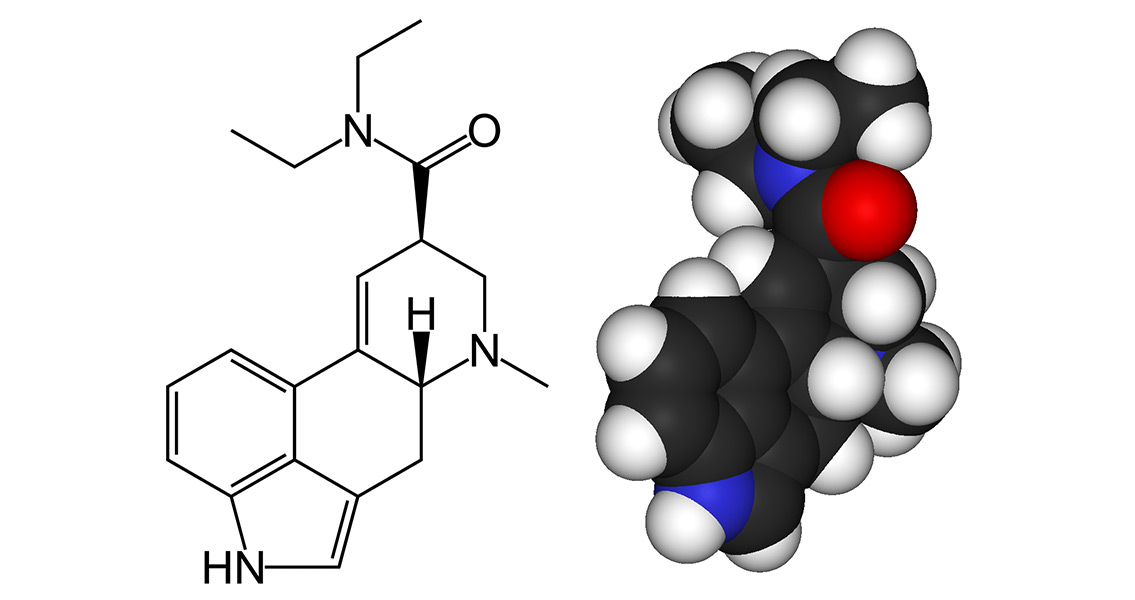<![CDATA[On 16th April 1943, a Swiss scientist became the first person to experience the hallucinogenic properties of lysergic acid diethylamide -25, commonly known as LSD. The drug would go on to be a central component of 1960s counter culture, and the subject of controversial experiments by the CIA. Albert Hoffman, born in Baden, Switzerland, in 1906, had been working at Baden Pharmaceutical when he originally synthesized LSD in 1938. He created the compound with the intention of using it as a blood stimulant. In 1943, he accidentally ingested some of the LSD. Hoffman recorded the side effects of the drug in his notes, "Last Friday, April 16, 1943, I was forced to interrupt my work in the laboratory in the middle of the afternoon and proceed home, being affected by a remarkable restlessness, combined with a slight dizziness. At home I lay down and sank into a not unpleasant, intoxicated-like condition characterized by an extremely stimulated imagination. In a dreamlike state, with eyes closed (I found the daylight to be unpleasantly glaring), I perceived an uninterrupted stream of fantastic pictures, extraordinary shapes with intense, kaleidoscopic play of colors. After some two hours this condition faded away." Following a second test, where Hoffman deliberately recreated and ingested LSD to confirm it had indeed been the cause of his altered mental and physical state, he published a report announcing the discovery of the hallucinogenic drug. Over the following decades, the drug would be experimented with in two completely antithetical circumstances - as a recreational drug of the sixties counter culture, and as a weapon by the CIA. By the 1960s LSD had become popularised as a "mind expanding drug" by a host of counter culture figures, such as Ken Kesey (author of One Flew Over the Cuckoo's Nest) and beat poet Allen Ginsberg. In the period before the drug was illegalised, academics had even argued for its benefits to psychiatry. Timothy Leary, a psychologist from Harvard University, encouraged students to "turn on, tune in, and drop out", believing the psychedelic properties of the drug could be useful in dealing with behavioural issues that would take years to combat with therapy. The counter parts to counter cultural experimentation with LSD were the mysterious experiments the CIA carried out with the drug. From 1953 the CIA operated a top secret behaviour modification research program known as MKULTRA. Among experiments involving hypnosis, interrogation and shock therapy, hallucinogens such as LSD were also given to volunteers - Kesey was one early volunteer on the program. As the Cold War escalated, the CIA started to view LSD as a potential weapon. Exact details of this program are of course hard to find, as many relevant documents are classified or destroyed, making it difficult to separate fact from conspiracy theory. A cache of documents related to this program were released in 1977, however. They revealed the CIA had secretly administered the drug on a range of unknowing subjects, among them prisoners and mental patients. 'Operation Midnight Climax' saw the CIA employ prostitutes to administer the drug to unsuspecting clients while CIA agents secretly observed their behaviour. As the 1960s drew to a close, LSD was increasingly viewed as a dangerous drug with potentially damaging long term side effects. It was widely illegalised, and many of its most prominent advocates were discredited, marginalised or imprisoned. As for the CIA, it abandoned experiments on the drug following its illegalisation in the US in 1967. Although LSD has experienced something of a resurgence at several points since its sixties peak, it remains clearly associated with counter cultures and illegality. The hallucenogenic drug first experienced by Hoffman in 1943 has the strange history of having been used as questionably by authorities as it has by counter cultures.]]>
Hallucinogenic Properties of LSD Discovered by Mistake
